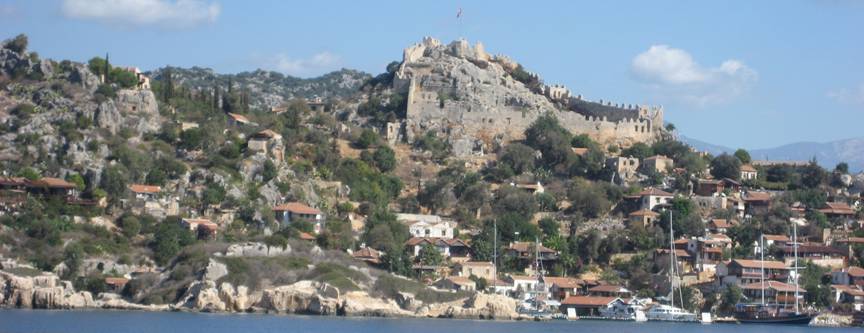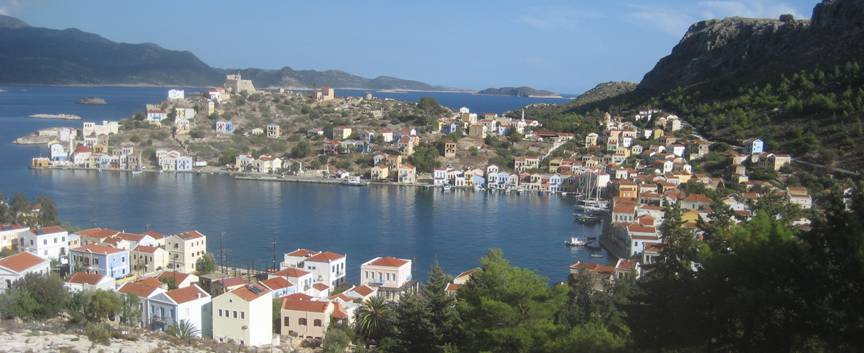Kastellorizo (Greece)

|
This is 2 entries rolled into 1! On Thursday (14th) we had a long day motoring in flat calm back to Kekova Roads where we stayed a few days ago. In the last few minutes we had the 1st serious daytime rain since arriving in Greece months ago – not bad eh? We nosed our way through the rock (and tomb!) strewn approach to moor up in Kale Koy – a hamlet so small and out of the way it has no paved roads or paths and everyone zooms around in small boats – even quite young kids. There are a number of rickety pontoons owned by sea-front restaurants here and as soon as you approach they wave madly at you to get you to moor – and eat – with them.
Friday started with a brisk and un-forecast wind, from exactly the wrong direction of course! It was great to have the sails up again and to test our ability to get the boat moving to windward. In the usual confused seas and wind veering all over the place it was quite a challenging few hours, but great fun nonetheless, steering manually as the autopilot isn’t great at optimising speed & direction into the wind. We arrived back in Greece, the outlying Dodecanese island of Kastellorizo, in big gusty winds that all but disappeared within minutes of mooring up. Ho hum.
It is great to be back in Greek territory with the architecture, restaurants, town quay etc than we are so used to. Not that Turkey doesn’t have its good points (especially the food), but somehow we feel much more at home with the Greek way of doing things. You may be asking why this island is Greek despite being a few kilometres off the Turkish coast and 120km from its nearest neighbour in the Dodecanese – Rhodes. It’s a history that goes back a long way, but most recently it was handed over to Greece at the end of the WW2 by the Italians who “owned” it for a few decades. It was the setting for the film “Mediterraneo” which is well worth watching. The island has a large and very attractive harbour and was a prosperous trading centre in earlier centuries. At the beginning of the 20th century there were 20,000 inhabitants. Now there are less than 300! Apparently as many as 10,000 emigrated to Perth, Australia. Some of the lovely “mansions” with their wooden balconies and bright painted colours have been renovated, especially on the waterfront, but there are many, many houses falling down among the winding lanes behind the town. There is a steep backdrop of cliffs, glorious views back towards Turkey and the whole place has a unique feel to it.
We’ve just returned from a great march around the island to find the Hellenistic castle that dominates the view over towards Turkey. It seems more modern military preparations are afoot as well though, with a big new barracks, gun emplacements and field guns all over. We just made it back to the boat before the next storm hit us – last night was very stormy with torrential rain and big gusts of wind, leaving wet patches under several windows that D didn’t close properly – oops. |

